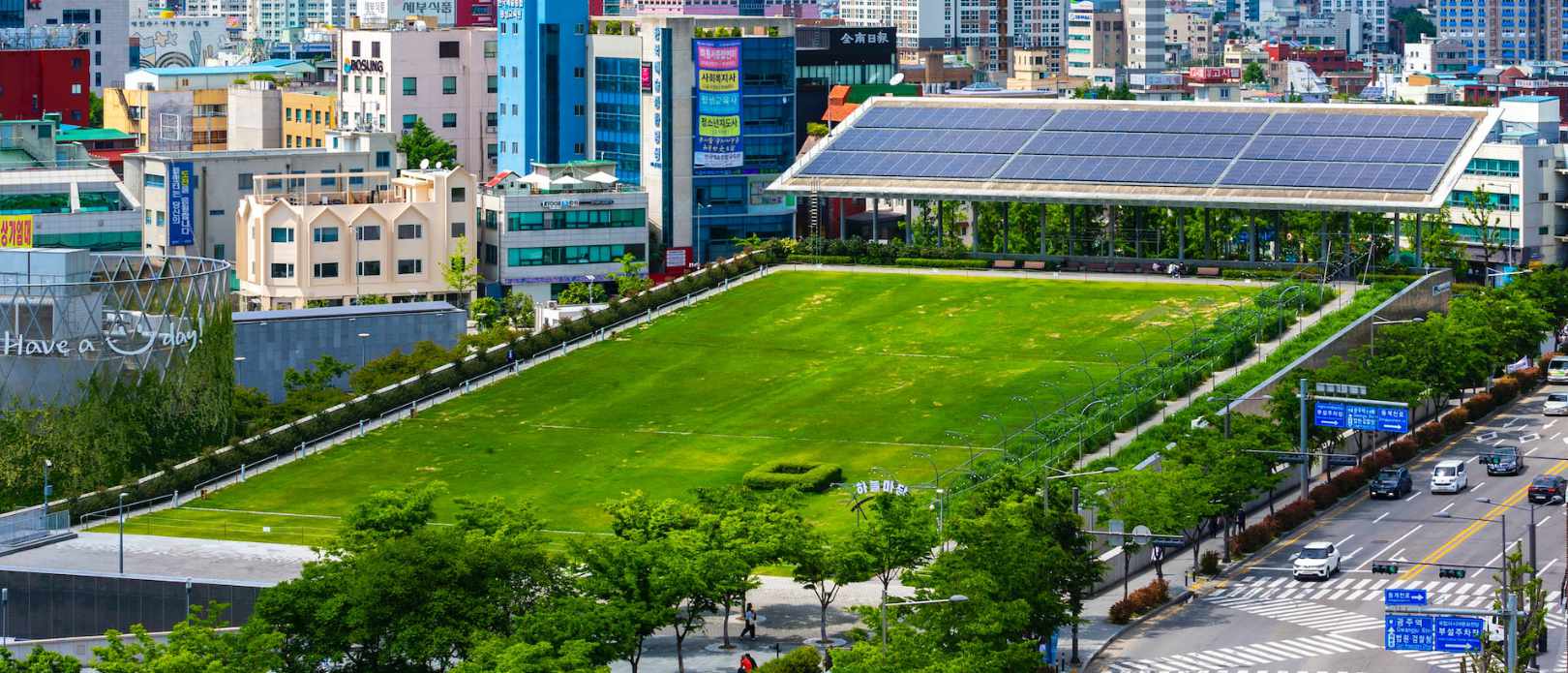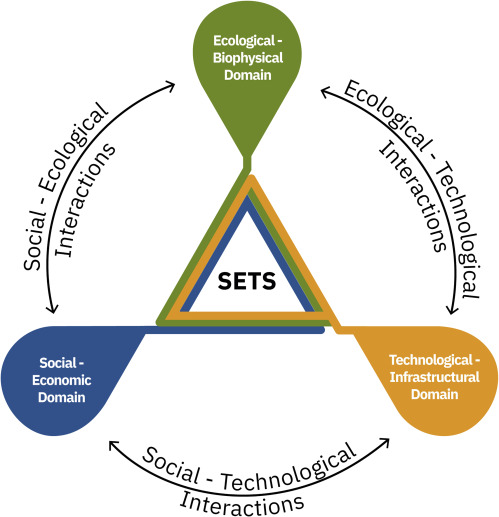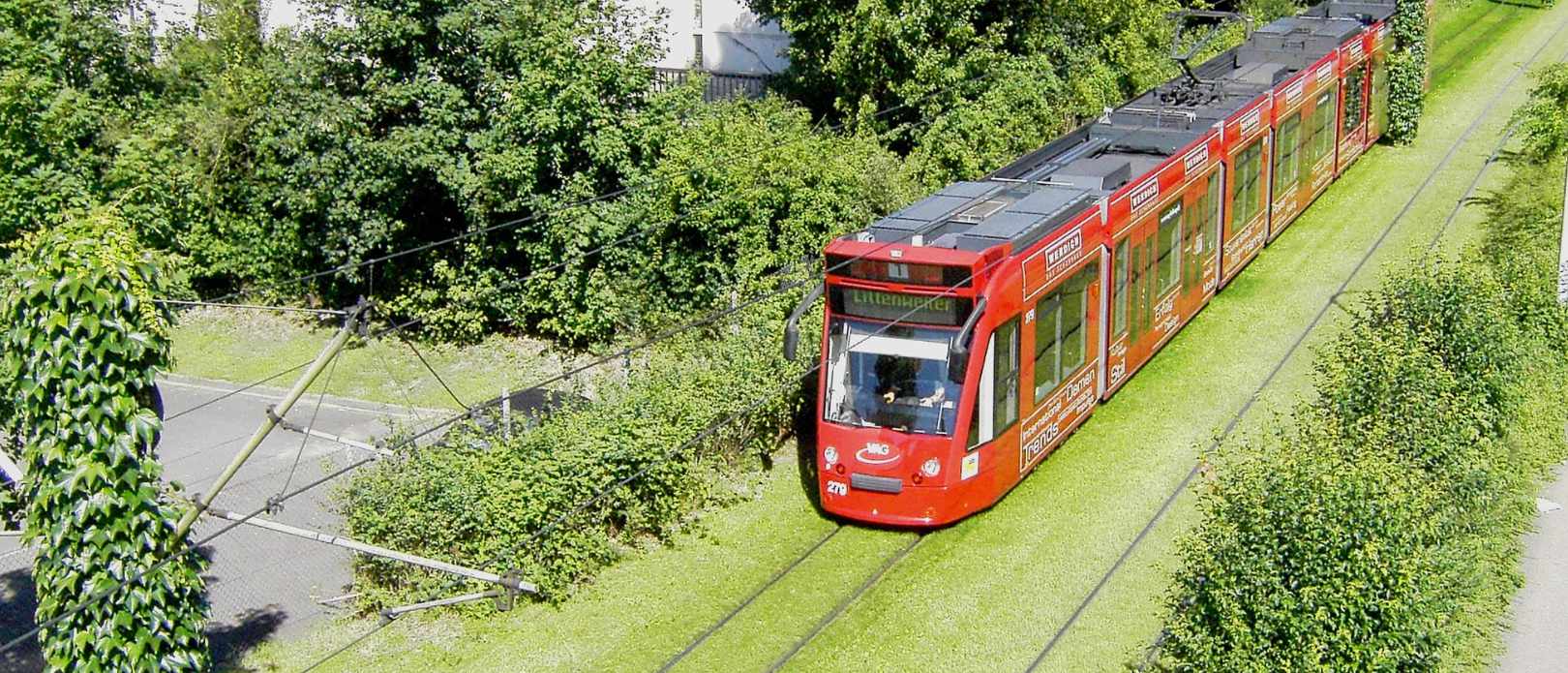URBAN SUSTAINABILITY
Adding the technological to the social-ecological

Without a more holistic approach to urban ecological infrastructure, we will not be able to supply critical ecosystem services effectively and sustainably over time, researchers warn in a new study. Pictured is the large lawn of Hanul Madang on Asia Culture Center in Gwangju, South Korea. It is not used as a case in the scientific article. Photo: Asia Culture Center/Unsplash
Researchers make the case for a more systematic way of thinking when designing urban, nature-based solutions
- Research and practice rarely apply a systems approach to urban development
- This means that several factors affecting the production and management of urban ecosystem services risk being forgotten
- The SETS concept acknowledges dynamic interactions among infrastructure, technology and institutions that are critical to maintaining, managing and designing ecosystem services
ALL THINGS CONSIDERED: A more comprehensive framework where natural, technical and socio-economic factors are all taken into consideration can be a boost to urban sustainability, according to a study recently published in One Earth.
The paper is authored by centre researcher Timon McPhearson together with an international team of colleagues including centre colleague Erik Andersson as a co-author.
Scales and dimensions
Despite a growing recognition of the importance of ecosystem services when designing sustainable cities, research and practice rarely apply a systems approach to their work.
This means that several factors that affect the production and management of urban ecosystem services risk being forgotten.
“Without a more holistic and systems-oriented approach to how we develop urban ecological infrastructure, we will not be able to supply critical ecosystem services effectively and sustainably over time,” McPhearson warns.
In the study, McPhearson and his colleagues make the case for a more systematic way of thinking when designing urban, nature-based solutions.
Introducing the Social-Ecological-Technological Systems conceptual framework (SETS):
- Social dimensions of ecosystem services may include management, planning, policy, finance, perceptions and values
- Ecological dimensions may include climate, weather, biodiversity and species traits that affect the ecological functioning
- Technological dimensions can include physical components such as dams, engineered basins, irrigation and construction material as well as technological resources including media, IoT sensors, or smart water systems
The SETS framework explicitly acknowledges the interactions and interdependencies between these three overarching S, E and T dimensions.
This, McPhearson argues, will broaden research and practice on ecosystem services:
SETS brings forward a systems perspective that treats cities for what they are: complex systems.
More equitable
Unlike many definitions and frameworks of ecosystem services, SETS acknowledges infrastructure, technology and institutions that are critical to maintaining, managing and designing ecosystem services.
Take urban gardens for example. They provide food for local families and communities in addition to habitat for local biodiversity such as pollinators. They are also important meeting places for building social cohesion among communities.
But access to ecosystem services remains unequally distributed across cities, usually benefiting those who are already fortunate and privileged and many nature-based investments disregard social equity dimensions.
Applying the SETS framework has potential to lead to a more equitable distribution of ecosystem services through a more comprehensive understanding of the social, ecological and technological dimensions that underpin inequitable access.
Equally, it can help managers and planners to identify potential trade-offs and burdens:
- Reuse of industrial brownfields may seem like an expedient solution to reclaim vacant land but can expose citizens to toxic chemicals
- Investments in green space in low income neighborhoods can be framed as improving access for local communities but if not combined with other housing or infrastructure reforms can lead to displacement.
“The resulting synergies from considering all SETS dimensions in the management of urban ecosystem services can lead to more equitable distribution and impact of those services,” McPhearson and his co-authors conclude.
Read A social-ecological-technological systems framework for urban ecosystem services
McPhearson, T., Cook, E.M., Berbés-Blázquez, M., Cheng, C., et. al. 2022. A social-ecological-technological systems framework for urban ecosystem services. One Earth Volume 5, Issue 5, 20 May 2022, Pages 505-518, https://doi.org/10.1016/j.oneear.2022.04.007
Questions? Contact lead author Timon McPhearson










